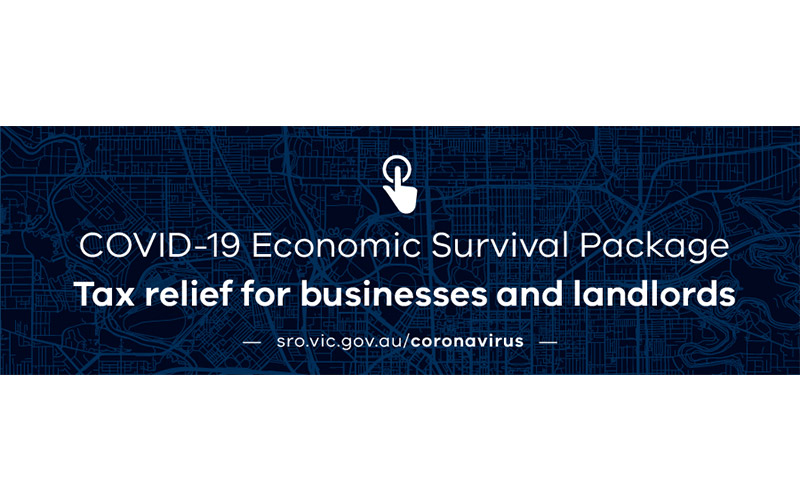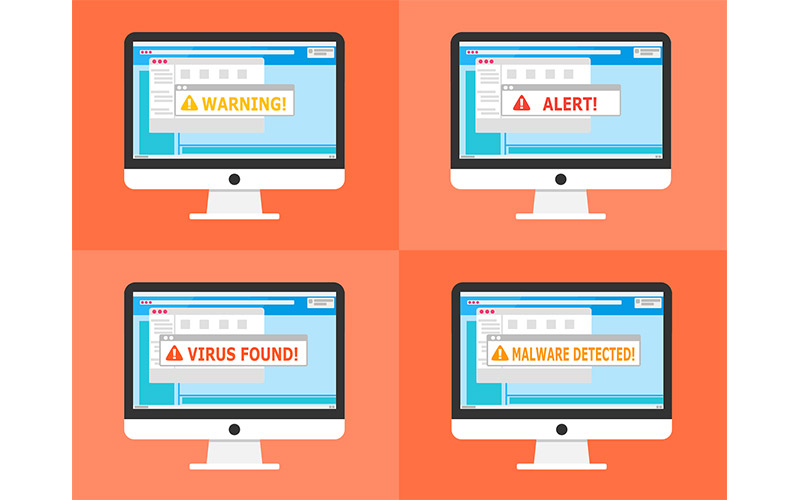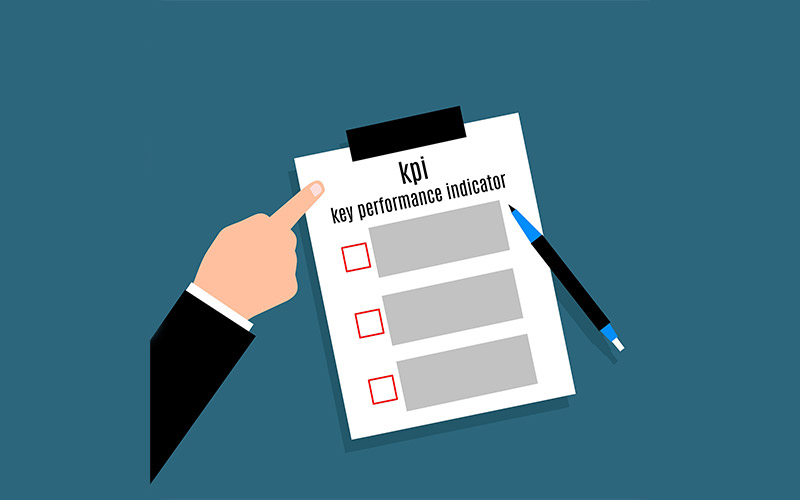
Setting Up an Online Store in Australia
Running a professional online store in Australia requires a large investment. Why? Because the processes behind the scenes are often complex. Logistics must work perfectly, marketing is time-consuming and employees must be flexible.
Wondering how to build an online store from scratch? From the elaboration of your project to its realization, there is a whole process to follow. Each step of the process will have to be carried out with finesse to create a viable and efficient store. This will allow you to launch your activity in the best conditions.
Here’s a step-by-step guide on setting up an online store in Australia. By conscientiously following this guide, you will avoid many common pitfalls. You will be several steps ahead of all those e-merchants who launch themselves without thinking much.
Contents:
- Step 1: Choose The Products You Want To Sell
- Step 2: Choose the technology for your online store
- Step 3: Define the special features of your products
- Step 4: Choose the company and domain name
- Step 5: Choose the legal structure of your company
- Step 6: Find suppliers
- Step 7 : Choose an eCommerce Platform
- Step 8: Choose your webmaster
- Step 9: Establish a quality customer support
- Step 10: Create product descriptions
- Step 11: Commercialisation
Setting up an online store in Australia
Before knowing how to open an online store step by step, you need to prepare the groundwork to get off to a good start.
There are two different types of behaviour among future e-merchants.
- Those who start too fast, without thinking too much, and then don’t understand why their online store doesn’t work.
- Those who waste an incredible amount of time trying to know all the answers to their questions before taking the next step.
Neither of these two methods is effective. You must therefore prepare your project well without spending too much time on it. Although it is difficult to give figures, we advise you to spend between 3 and 8 months preparing your online store.
Beyond 8 months, your motivation will decrease. You will still not have obtained results and the amount of work remaining may make you give up. And below 3 months, there is a good chance that you have skipped a step and that your project is not well thought out.
Step 1: Choose the products you want to sell
The key to setting up an online store in Australia depends very much on the correct choice of what you want to sell. There are so many things you could sell, so how exactly are you going to choose? Here are a few tips to make this decision a little easier.
Of course, you are not limited to following any of these ideas. You can try any combination. The beauty of online business is that you can afford to experiment before you find the right formula. Traditional business is expensive, but online business doesn’t have a lot of financial constraints or limits to freedom. You can explore whatever you like.
You have to rely on your intuition, but not only that. You must also have tangible proof that some people are willing to spend money to get your product. Also, check if the competition is not too strong. For that nothing replaces market research. But don’t worry, you won’t go door-to-door with your survey in your hand. You can do everything online. To make your research even more fruitful, here’s a quick list of things that you should take into consideration when choosing your product.
Selling things that people need
If you have identified a need or know that there is a product that people will always need, that makes it one of the safest things to sell as the market won’t dry up. Unfortunately, it also means that you will have more competition. It can be a considerable obstacle for a newcomer.
If you can identify a niche product that people need and will always be needing, that’s where the real money is. A quick way to get ideas about the most popular products is to:
- Go to eBay or any other similar platform
- Choose a category
- Sort by the number of orders.
Selling things that people want
The good thing about selling online is that there are many tools to help you research your market. Use research analytics to identify trend topics and interests, but beware of the trends. Those are tendencies that will have a very short lifespan.
When setting up an online store in Australia, you need to be really confident about your business. You need to believe that it’s a quality and value to the consumer, something you’d be proud to sell.
Selling products that have global appeal
The online world gives you access to a global marketplace. You really lose this advantage if you sell products that are only useful in a limited geographical area or for a limited time. This doesn’t mean that you can’t make money with such products, but it does need more effort.
There’s another side to this as well, and it ties in well with the first tip. Identify something that people need but is scarce in one place but in abundance in another. You can indeed make money by buying from the abundance location and selling it in the scarcity one.
All you have to do is target your marketing very precisely so that no one understands your game. Otherwise, you will be swamped with competitors.
Selling things you’re already passionate about
There is no doubt that if you really like something, you will be better able to sell it. You’ll probably also do a better job of promoting it on your website.
For example, if you’re really interested in health and fitness, sell products that reflect this interest. You’ll find it easier to write about these products in your blog posts and you’ll get a marketing boost. You’ll also find it easier to find new products for sale because you’re already interested in the types of products that are offered.
If you are an expert, you should sell products that are appropriate for your area of expertise. This will allow you to provide quality advice to customers. They will really appreciate a competent and reliable service.
Selling other people’s products
You can sell almost any product without having to store it. It’s called direct delivery. If you invest a little money in creating a strong brand identity, you can succeed.
How does it work? When a bulk manufacturer doesn’t want to invest money in marketing, packaging, branding, etc., you can team up with him and focus on selling the products he makes. This is how it works in most cases:
- You create the brand
- He creates the product
- You sell the product and send it to the consumer, if something goes wrong in that process, you’ll probably be responsible. But that’s part of setting up an online store in Australia.
Facilitating sales of other people’s products
This is a business model that is rarely considered, but which can potentially work in the right circumstances. It involves a situation where you don’t negotiate in any direct way. You simply provide a website that allows others to trade. You save a percentage of sales as a commission for providing the site.
Promoting things and letting others sell it
Affiliate marketing programs allow you to promote other people’s businesses and products with a commission whenever someone makes a purchase. It’s very difficult to succeed in this field unless you know how to write a good copy that attracts an audience and motivates them to act.
Lazy affiliate marketing, where you simply post a banner ad on a web page is quite effective if you get enough traffic, but it is not nearly as successful as a well-written copy.
Selling subscriptions
Sometimes individual sales are not the best solution. If you have a powerful content type of website, people would want to come back and visit often. In that case, it can be a good idea to create a members-only area. There, you broadcast exclusive content to paying members.
This works if you have something that is very desirable but will probably not be openly negotiated by the people who buy memberships. A good example is investment advice provided you are an expert investor or any other kind of secret information that your target market is not likely to share too freely because they would get hurt if they did.

Example of a Subscription. Source: Kogan
The ideal product doesn’t exist?
If you started looking for what you could sell, you may have realized that it was quite difficult to find a product that perfectly meets all these criteria. If it was simple, everyone would already have their own e-commerce site.
However, you should not systematically get rid of the products that do not meet all the criteria. It is always necessary to counterbalance the qualities and shortcomings of a product.
Also, think that if you find a product that has many qualities but also a major defect that could greatly impact your sales. If you are able to find an alternative or correct this problem, you will have a huge advantage over your competitors. It is even possible that you are the only one able to sell this product.
Step 2: Choose the technology for your online store
The software solution you select will depend on the complexity of your business activity. An all-in-one software solution is available for simple and standardized products. You can even download it free of charge over the internet. However, free solutions and data packages can quickly reach their limits. Upgrades and updates become expensive. You will have to rely on specialized agencies.
For more complex products and larger product ranges, an individual solution is usually more appropriate. In any case, make sure that the software is scalable, especially in order to export your products abroad at a later date. You should also clarify which interfaces are available based on your current IT equipment and suppliers.
Step 3: Define the special features of your products
The products are not the only areas of focus when creating an e-commerce business. There are few sectors with no competitors, so you will need to find a way to stand out. For this, it is necessary to find an innovative solution.
Establishing additional options will help you complete your project. You will also communicate in a more original and unique way. It is also what will make you attract the attention of your prospects.
Step 4: Choose the company and domain name
The choice of the name you will give to your site has a real impact on your marketing strategy. It is the first element that distinguishes your site in the eyes of Google but especially of its users.
It is partially through the name of your site that your potential customers will be able to identify the activity of your site. It is therefore necessary to think carefully before buying your domain name.
The URL of a website is composed of a domain name associated with an extension. The extension of the domain name must serve you, once again, to allow all users to better understand what they can expect on your site.
There are different types of extensions:
- Generic extensions: .com, .net, .org
- Specialized extensions: .hotel, .info
- National extensions: .au, .in, .ca
For an e-commerce site, we advise you to first get the generic extension .com and the main national extensions for the countries in which you will sell your products.
Step 5: Choose the legal structure of your company
Selecting the best configuration for setting up an online store in Australia depends on several aspects, including:
- The cost
- Risk management
- Tax planning
The structure of the sole proprietorship is best suited to:
- Drop-shippers and other mail-order sellers
- Small, lucrative businesses
- People who don’t know much about taxes
Do you want to get into e-commerce without having to worry about the complexity of legislation and tax returns? Then a sole proprietorship is the best option for you.
If you create your company in association with one or more collaborators, it is possible to form a partnership. This formula is particularly flexible with regard to the allocation of different levels of responsibility between the partners. A partnership is most effective when at least two members share the direction of its activity. It is also advantageous for companies that receive funding from an investor.
Setting up a limited liability company (LLC) is not really a problem. But you have to spend more time and complete more paperwork than a sole proprietorship or partnership. On the other hand, it does guarantee its founders a separation between their personal and business affairs.
Tax obligations for online merchants: Setting up GST
There are several ways to subscribe to the Goods and Services Tax (GST):
- Online
- By phone
- Through your tax agent
- Through your Business Support Services (BSS) agent
This can be done when you first apply to register your business or at another time. This procedure is called “standard GST registration”. An Australian Business Number (ABN) is required to register for this type of procedure. The requirements for proof of identity may be different depending on whether you are a non-resident.
You only need to register for GST once, even if you run several businesses simultaneously. However, if you fail to register despite being required to do so, GST may be charged on sales made since the date you were required to register. This can happen even if you did not include GST in the price of those sales. You may also have to pay penalties and interest.
The tax rate for foreign companies
Australian resident companies are subject to Australian income tax on their worldwide income. Non-resident companies are taxed only on Australian-source income. When a company is a resident in a country with which Australia has a double taxation agreement, Australia will generally only tax profits attributable to a permanent establishment in the country.
Taxes other than income tax are deductible if:
- They are incurred to produce taxable income
- To carry on a business for that purpose
- Are not capital or private in nature
Foreign income tax offsets are available to avoid double taxation in respect of foreign tax paid on taxable income in Australia.
Taxation of capital gains
Australian tax residents pay capital tax at a standard rate of 30% (or a reduced rate of 26%) on aggregate net capital gains. Capital gains or losses on the disposal of shares by an Australian company in a foreign company in which the Australian company held at least 10% of the voting rights for a specified period may be reduced by a percentage that reflects the extent to which the assets of the foreign company are used in an active business. Foreign tax residents in Australia only include capital gains in taxable income for “taxable Australian property”.
COVID-19 tax deductions
Following the COVID-19 outbreak, the Australian government introduced several measures to support businesses. It includes a 15-month investment incentive to speed up capital cost allowance. The latter is valid until June 30, 2021.
If a company has sales of less than AUD 500 million, it will be able to deduct an extra 50 percent of the cost of the asset in the year of purchase, with the remainder being deducted over the effective life of the asset.
In addition, the threshold for the immediate write-off of assets has been increased from AUD 30,000 to AUD 150,000. It will include companies with cumulative annual revenues of less than AUD 500 million. It will be available until June 30, 2020. Other administrative remedies available from the ATO are currently being evaluated on a case-by-case basis.
Step 6: Find suppliers
This step is crucial. In fact, it is the suppliers who will be responsible for:
- The quality of the merchandise
- The respect of the delivery deadlines
- Helping you to have a consequent margin
You must definitely choose trustworthy and reliable wholesalers. You will have met them, they will be able to offer you products at an excellent quality/price ratio. This will guarantee the satisfaction of your customers.
To make sure you make a sustainable choice, you also have the possibility to go to an e-commerce trade show. Especially one concerning the sector of activity in which you wish to launch out. This option has the advantage of ensuring the reliability of the suppliers you meet.
Depending on the concept you have decided to set up, you can even avoid wholesalers. Go directly to the brands themselves! By removing an intermediary, you increase your margin!
Step 7 : Choose an eCommerce Platform
The e-commerce solution for setting up an online store in Australia is the platform under which your site will run. There are as many choices as there are needs. Some are free and others are paid with a monthly or annual subscription package.
There are therefore several criteria that arise:
- Cost
- Ease of use
- Management of the site
- Maintenance
- Marketing tools
- Site’s mobile responsive
- Customer service
- Security measures
Shopify is the world’s best-known e-commerce platform. More than one million e-commerce businesses are powered by this ecommerce solution. Comparable to Shopify, BigCommerce will allow you to customize even the smallest details of your online store:
- Fast loading speed
- Security on your site
- An inventory management system
In addition, you have the ability to synchronize your inventory with other channels such as:
WooCommerce is a free ecommerce plugin designed for the WordPress CMS. Nowadays, it is the most used e-commerce solution. With nearly 30% market share, all online stores worldwide are powered by WooCommerce. With a single free and simple plugin, you can turn your WordPress website into a full-fledged online store.
If you are new to online sales, Wix is a better solution for you. This e-commerce platform offers you a drag and drop option to view your changes in real-time. Do you prefer to be unlimited in terms of design and functions? Then you should better look into freer solutions such as:
Of course, you will have to master the code more, but you will be 100% owner of your store. You will be able to make the modifications you want, add or remove plugins at any time. There are many e-commerce themes available on the market, at prices ranging from 0 to $150. They are simple to install and you are free to customize them afterward, alone or with the help of a webmaster. It is necessary that the layout is perfectly studied so that online users go to the end of their purchases.
Step 8: Choose your webmaster
Only a few aspiring e-merchants truly master all the secrets of IT and digital marketing. If this is not the case for you, you go directly to the next step, although delegating part of the development could save you precious time!
Don’t forget that the design of your site is the equivalent of a physical storefront. If it doesn’t make people want to continue their visit, you won’t make any money. Your e-commerce must be ergonomic, the pages must load quickly and no link must return an error. To achieve all of that, a webmaster who knows his job inside out is the key to your success.
It is also necessary to take into account that his service does not stop when the site is online. You will need a person capable of ensuring maintenance and able to answer you if you have any questions.
Step 9: Establish a quality customer support
Create a true customer experience and make sure your procedures are as simple and consistent as possible:
- Carefully review, plan, and optimize all processes. From ordering to invoicing, delivery, returns, and complaints.
- Guide your customers through the process as simply and intuitively as possible. Create a link between products. Other things that inspire confidence are an attractive layout, relevant product information, detailed images, and extensive filter and search functions.
- Provide quick assistance at every step of the way, whether by phone, Live Chat, e-mail, WhatsApp, or via social networks. Make sure you respond as quickly as possible to keep you in touch with your customers.
- Optimize your online store for mobile devices.
Shipping and Returns
The best logistics partner is Australia Post API. You and your customer will be able to:
- Manage all shipments
- Print shipping labels that are always up-to-date
- Create dangerous goods forms and order summaries
- Correct the addresses to reduce any shipping default
- Track items on the website or app
Do not underestimate the costs associated with:
- Order preparation
- Packaging
- Postage
- Shipping
- Return
The customer wants economical, fast, and safe delivery, as well as a conciliatory return policy.
Think about the renewal rate
For setting up an online store in Australia that is profitable in the long term, your customers must come back. As you certainly know, it is less expensive to retain a consumer than to prospect for a new one. This is where the main products that require consumables to operate come into play. This is like printers that need ink cartridges. Get ink cartridges, not new printers.
As most stores do, you should have a loyalty card system. If your customer knows that he will receive a gift or a discount for multiple orders, he will come back to you. He knows that in order to reduce his costs in the long term, it is in his best interest to remain loyal to you.
Don’t forget about data security
Confidential treatment of customer data is a priority. Guarantee the customer in your GTC that his personal data will not be passed on to third parties. Customer data and credit card information should only be transmitted in encrypted form via Secure Socket Layer (SSL).
Regular back-ups are essential as external malicious attacks are unfortunately commonplace. Your customer data will thus be better protected. Unfortunately, it is not only small stores that are affected but also large retailers. In 2011, the Sony Group’s Playstation network was hacked, and 77 million customer data were hijacked digitally.
Step 10: Create product descriptions
It is essential that your product descriptions give visitors all the main features of the product as well as the reason why their life will be easier after purchasing it. You need to take care of the writing by adding usage tips and fitting ideas. Your syntax must be sales-promoting, concise, and readable.
Avoid simply copying descriptions provided by manufacturers. Not only will you not bring any added value to your visitors, but you will expose yourself to duplicate content. This means that if all the ecommerces selling this product publish the same description, you risk being penalized by Google. And if your store goes down in search engines, you will never get customers!
So, prefer unique descriptions of at least 150 words to please the search engine robots and go up in the results. Don’t forget to include the relevant short and long tail keywords.
Step 11: Commercialisation
At this stage, you have done most of the work! Your site is almost ready, your product sheets are written and you can start putting it online. You know how to open an online store step by step.
Nevertheless, being online will not be enough to get back in the results and especially to capture customers. You will have to promote your e-commerce and create a community around your business. This will be possible thanks to the implementation of a successful digital marketing strategy.
Give priority to the marketing approach:
- The more your company will appear at the top of the search results on Google, the better its positioning in the search engine. Invest in the SEO of your online store. You can do this by writing attractive titles and meta descriptions. Don’t forget to integrate customer keywords in the content description. An agency specialized in SEO can help you with this.
- Email marketing is a good solution to retain your existing customers. Programs like MailChimp will help you to send your messages. However, please observe data protection. Your contacts must be able to refuse to receive an advertising email at any time. The storage of data on the server must be carefully considered.
- If you have a professional Facebook page or are registered on another social platform, communicate with your customers on a regular and adapted basis. You can reach new target groups through sponsored advertising and content or publish organic content.
- Also consider integrating offline channels to better exploit your online potential, for example by attaching printed discount coupons to merchandise shipments.
Track Your Store KPIs
An online store is a business in its own right: it must be managed and monitored according to objectives. These are established through the use of indicators, called KPIs. These can be collected and listed on an ecommerce dashboard.
A dashboard is a management tool that allows you to have a global vision of your current project. In the case of an e-commerce dashboard, it allows you to control your activity and its evolution. It is thus a synthetic means to evaluate the performance of your online store. It enables you to measure precisely the impact of your investments and their profitability.
After selection of the performance indicators representing the essential aspects of your activity, you will be able to analyse your e-commerce strategy, and mostly the following:
- Its strong points
- Its opportunities
- Its weak points
The e-commerce dashboard is thus personalized and offers you visibility on the most important indicators for you. These dashboards can be focused on:
- The success of your marketing strategy
- Your customer relationship
- The maintenance of your stocks and logistics
Result KPIs
The purpose of a business is to provide a product, or service, and to generate revenue. These key performance indicators are therefore relevant for an E-merchant who is looking to generate revenue on the Internet. You can find several KPIs to integrate into your e-commerce dashboard, such as :
- Turnover (before and after-tax): this is one of the most important e-commerce KPIs, and rightly so. It allows you to assess the health of your company. It is also possible to take into account other elements, such as the evolution of this turnover over selected periods (3 months, 6 months, 1 year, etc), the gross profit, and many others.
- The number of orders: it is possible to take into account order returns, or not, as well as cancellations.
- The commercial margin: the cost price allows you to obtain this other e-commerce KPI, leading to the calculation of the profitability of the business.
- The acquisition cost: this element designates the average expenditure you make to obtain a new customer.
- The operating cost: this element designates the expenses that you mobilize for the production of a product.
- The operating result: corresponds to the losses and revenues generated by the operation of the business. This is before the deduction of taxes and interest.
Acquisition KPIs
Acquisition refers to the new customers you attract to your site. This can be done through promotional actions or the use of the different channels at your disposal. The follow-up of the acquisition can be done in the e-commerce dashboard thanks to the following data:
- The number of visitors/visits (traffic): as in a physical store, the number of visitors allows you to calculate the conversion rate of your e-commerce.
- The number of new visitors/visits: this element allows you to differentiate between recurring and new visitors.
- The number of visitors/visits per channel: if you practice an omnichannel strategy, it is possible to take into account the number of visitors per channel (sources of traffic). This enables you to know which one represents the most attractive for consumers.
- The cost of acquisition per channel: allows you to know the expenses necessary to generate a visit, for each of the channels you use.
- Profitability per channel: This item compares the acquisition costs per channel and what it relates to.
Conversion KPIs
Conversion refers to a visitor who does the action of consuming on your online store. Once he buys your e-commerce, we can designate him as a converted customer. Here are the relevant indicators to show on your dashboard :
- The conversion rate: the number of visitors that you have managed to convert into a customer. For a complete marketing KPI, you can take into account the conversion rate per channel. You will know which channels are the most efficient to attract visitors, and which channels allow the most conversion.
- The bounce rate: refers to visitors who have left your store having visited only one page (often the home page). This indicator helps determine if you need to apply changes to your site.
- Shopping cart abandonment rate: should help you set up a new path to validate your purchase.
- The click rate: it is possible that your site displays several buttons, CTA and others. These are allowing you to take consumers to your product descriptions and different offers. Monitor visitor behavior and use e-commerce KPIs to determine the right place, the right size, the right color of your buttons.
- The number of products in the catalog.
- The average basket: it refers to the price of the average order placed by your customers.
Retention KPIs
Retention refers to pushing a consumer who has already purchased on your site to repeat the experience one more time. Multiple purchases allow you to create a relationship with the consumer who will therefore be considered loyal to your brand. This data must be implemented in the follow-up of your e-commerce dashboard:
- The ratio of old customers/new customers.
- The percentage of turnover generated by old/new customers: this KPI allows you to know the distribution of turnover between old and new customers.
- The frequency of purchase: represents the number of purchases that one of your customers will make, over a given period.
- The average time between orders.
- The rate of return of the products.
- The customer satisfaction index: competition is tough on the Internet. This is why customer satisfaction and loyalty are data to be taken into account in your business. To find out how satisfied your customers are, ask them to write down their exchanges with your team afterward.
The more you know about your environment and the preferences of your prospects, the better you can improve the conversion funnel on your site and your marketing strategy. So when you launch your online store, don’t forget to link it to tools like Google Analytics and Google Webmaster Tools. Now you know everything there is to know on how to build an online store from scratch.
Still hesitant about one of the steps? Don’t waste your energy and precious time. Contact Masters of Digital to get everything set up for you in no time and with full professionalism, just the way you want it!
Considering a new Online Store? Complete the below form to discuss your project and get a free quote from your local Australian eCommerce website designer.





























